Tire balancing is a tune-up for your wheel-tire set. It makes sure that weight is evenly distributed around the entire circumference of the unit. The common symptoms of out-of-balance tires are uneven and faster tread wear, poor fuel economy, and vibration in the steering wheel, the floorboard or the seat that gets worse at faster speeds.
When all areas of the wheel-tire unit are as equal in weight as possible, the tire will roll smoothly. This helps it wear evenly, for longest life. Balancing also contributes to ride comfort: Imbalanced tires will wobble or hop up and down, which causes vibration. If a front tire isn’t properly balanced you’ll likely feel vibration in the steering wheel. If the problem is in the rear the tremor will be noticeable in the seat or floor.
Imbalanced tires are easily corrected, but the work is precise. It’s done by attaching small weights, just fractions of ounces, to the wheel.
Everyday wear on tires will contribute to imbalance. Normal manufacturing imperfections are also a cause: Tires and wheels don’t have precisely equal weight distribution. They’ll be slightly heavier in some spots.
Just half an ounce in weight difference is enough to cause a vibration when you’re driving.
Rebalancing is done in a tire shop by putting the wheel-tire unit on a tire balancing machine that takes measurements to pinpoint lighter or heavier areas and making adjustments to account for these weight differences. The best time to get it done is when tires are being rotated, both for convenience and because you might have a tire out of balance on the rear of the vehicle and won’t feel it until it is moved to the front.
Here’s how it’s done:
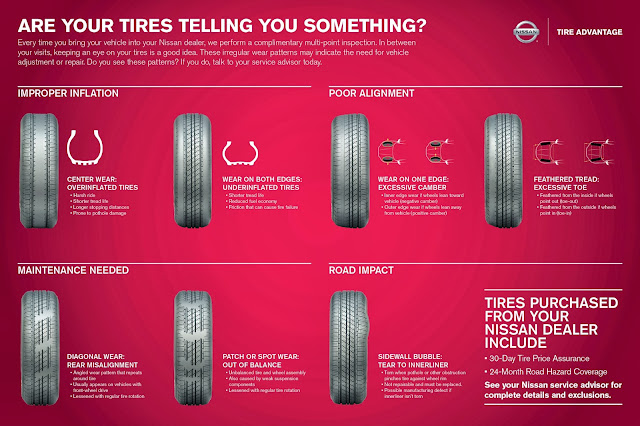
Though both should be part of regular auto maintenance, balancing isn’t the same as getting an alignment. Wheel alignment corrects the angles of the tires so they travel in the same direction and make contact with the road properly. Alignment reduces uneven tire wear and extends the life of your tires. Oftentimes tire balancing and alignment are perceived to be the same thing, but are not.

Tire balancing and rotation are often done at the same time, but they aren’t the same service. Tire rotation is when a vehicle’s front and rear wheels are switched to even out tread wear between them. Since both require removing each wheel, it’s convenient to do them at the same time.
Vibration when underway could be caused by an imbalanced tire and wheel assembly or something else — a bent wheel, a damaged tire (which won’t be fixed by balancing), worn suspension parts or other aging components. If you feel a vibration, don’t wait to get it diagnosed. You’ll head off other problems — and enjoy a smoother ride — when your tires are well balanced.
Schedule an Appointment
Imbalance is one of the situations many people don’t want to encounter while driving because it will make them have a bad driving experience. So, how to tell which tire is out of balance?
So, how to tell which tire is out of balance?
In fact, many ways will help you realize this situation, such as:
The following article will guide you in detailed information. Let’s follow along!
Unbalanced Tires SymptomsSymptoms Of UnbalanceOne of the first signs that your new wheels are out of balance is that the car will shake very vigorously, especially when traveling at high speed. If not adjusted in time, these unbalanced wheels can affect you and even cause an accident.
Rapidly running out of fuel is the second sign of an unbalanced one. You will notice a sudden drop in energy as the engine has to try to use more power to move the vehicle.
In addition, you may also hear humming or hissing noises, and their levels will increase as the speed increases.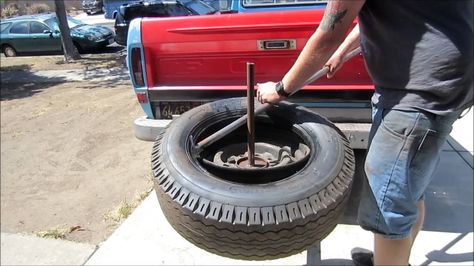 It will reduce your driving experience.
It will reduce your driving experience.
Besides, if you notice that the car is tilted or the wheels are worn a lot, you should quickly bring the vehicle to the shop and have it repaired.
Finally, the sign that they are out of balance is due to the vibration of the steering wheel. The steering wheel is the part that needs stability to control the vehicle. If an imbalance affects the steering wheel, you will notice a slight vibration.
Causes Of Unbalanced TiresWhy does imbalance happen? There are many causes of this problem. It can be internal factors, or it can also be external influences.
Internal factors such as the car’s suspension system, due to uneven weight distribution on all four tires, cause this imbalance.
Car’s suspension systemHowever, most of the causes of loss of balance will be due to the way the vehicle is controlled. Several bad driver habits can contribute to severe tire wear. Their constant stopping may reduce the weight of a part of the tire that also causes this imbalance.
In addition, due to driving techniques or the terrain of the road, many potholes can also cause your rims to fall off, losing balance.
The terrain of the roadWeather is also one of the reasons why your car is out of balance. When it’s cold weather, sudden low temperatures can cause the tires to be under-inflated and reduce the elasticity of the wheels when in contact with the road surface.
Conversely, if you inflate your car too much, you will also cause the tires to wear abnormally and make them unbalanced.
How To Help Balance Tires?After knowing the causes and signs of an unbalanced one, the next thing you need to do is to fix it.
The first step you need to take is to double-check to see what is causing the imbalance. You should put the car on a flat surface and observe which side it tilts. For more convenience, if you want to perform other tasks such as wheel alignment, you can use a 4-post car lift.
Once you know which side it leans on, it’s up to you to start addressing it.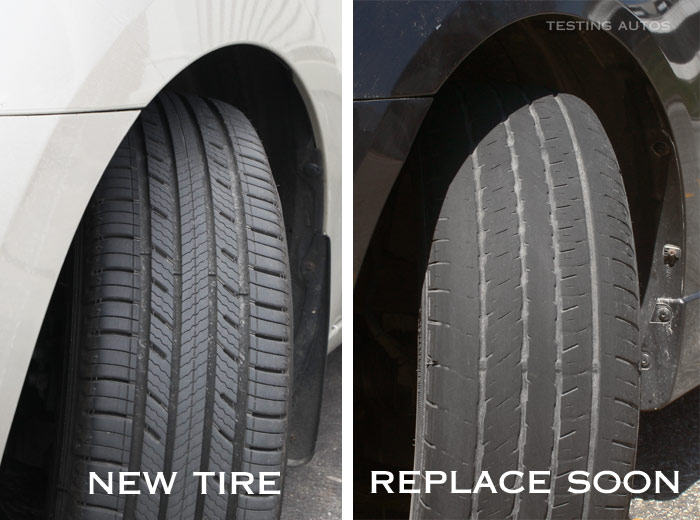
If these are simple errors, you can completely do the repairs yourself at home. For example, the cause of unbalance is a flat wheel.
You will only need to re-inflate to the tire’s recommended limit. Because as mentioned above, over-inflated tires can cause wear to happen faster.
For more tips to handle it at home, check out this video below!
But if your car needs to be realigned, you should ask a professional to handle it for you because they will require quite complicated operations.
If your rim has come off due to an impact, you should have it reattached or replaced by a technician. You can go to professional car repair shops or the place where you bought your car for a warranty.
Repair shopsWhy Balance Tires?Ominous signs can occur if your vehicle is not balanced with tires. On the contrary, if your tires are balanced, you will have a very smooth ride without discomfort or any problems at all.
On the contrary, if your tires are balanced, you will have a very smooth ride without discomfort or any problems at all.
In fact, the problem of wear is something you will never avoid when moving. Therefore, experts recommend regularly rotating the wheel to limit this. The uneven wear of the tires also leads to a difference in weight across the circumference of the tire.
If regularly balanced tires are combined with a consistent tire rotation process, they will last longer. So, you should prevent an unbalanced tire from happening instead of spending a lot of money on replacing it.
FAQsIn fact, you can still drive when the wheels are out of balance, but it will be pretty complex and annoying for you when the noise is emitted, or the car shakes. However, if this condition persists, it can seriously affect your driving and even cause an accident.
As we’ve already mentioned, if you don’t fix your tire imbalance, you’ll run into problems and possibly endanger yourself.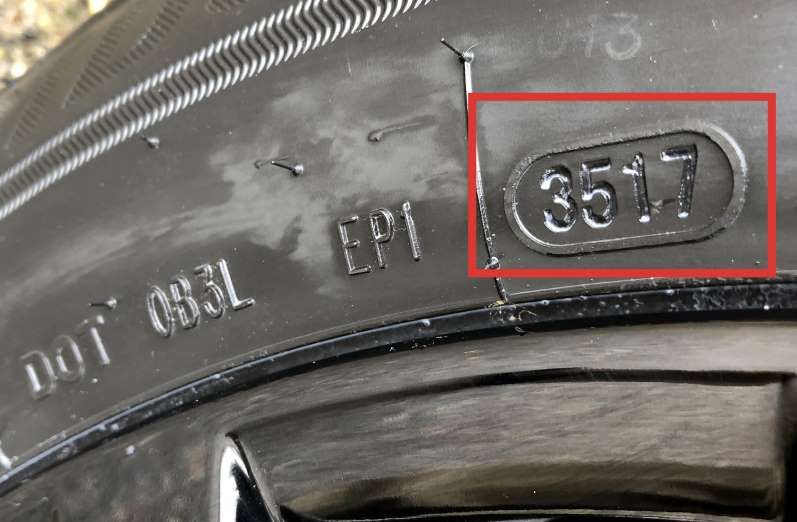 Unbalanced tires will not correct themselves if you do not intervene in them. Do not prolong this situation if you do not want to spend a large amount of money to fix it.
Unbalanced tires will not correct themselves if you do not intervene in them. Do not prolong this situation if you do not want to spend a large amount of money to fix it.
Tire wear is something you won’t be able to avoid. If you do not regularly check and adjust it, it is straightforward for your car to lose balance. Add to that your driving habits that can also cause imbalance. The road, if there are many potholes, will also cause this problem.
ConclusionThis article has helped you answer the question: “How to tell which tire is out of balance?” Many reasons can lead to this situation, but if you focus on observing closely and fixing it in time, you will save a lot of money.
Thank you for taking the time to read the article!
This post was last updated on Many drivers have experienced the effects of wheel imbalance.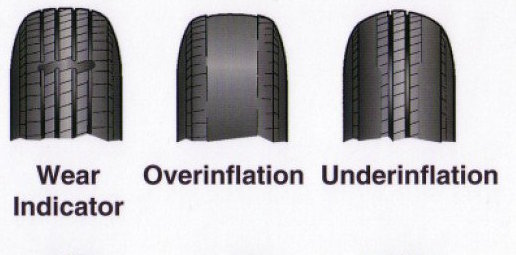 One of them is vibrations, which increase as the speed of the car increases. The problem of imbalance is also experienced by drivers who have changed rims and tires, as well as those involved in traffic accidents. Today Avto.pro will analyze in detail the types of wheel imbalance, the characteristic signs of this problem, as well as all the possible consequences.
One of them is vibrations, which increase as the speed of the car increases. The problem of imbalance is also experienced by drivers who have changed rims and tires, as well as those involved in traffic accidents. Today Avto.pro will analyze in detail the types of wheel imbalance, the characteristic signs of this problem, as well as all the possible consequences.
Wheel imbalance is the deviation of the axis of rotation of an automobile wheel relative to the axis of inertia, which provokes an uneven distribution of masses along the trajectory of rotation. Consequences: beating of wheels, steering, intense and uneven tire wear. Distinguish between static, dynamic and combined imbalance. The concepts of "imbalance" and "unbalance" usually refer to those elements of the car that perform rotational movements.
The wheel is just such an element. It has:
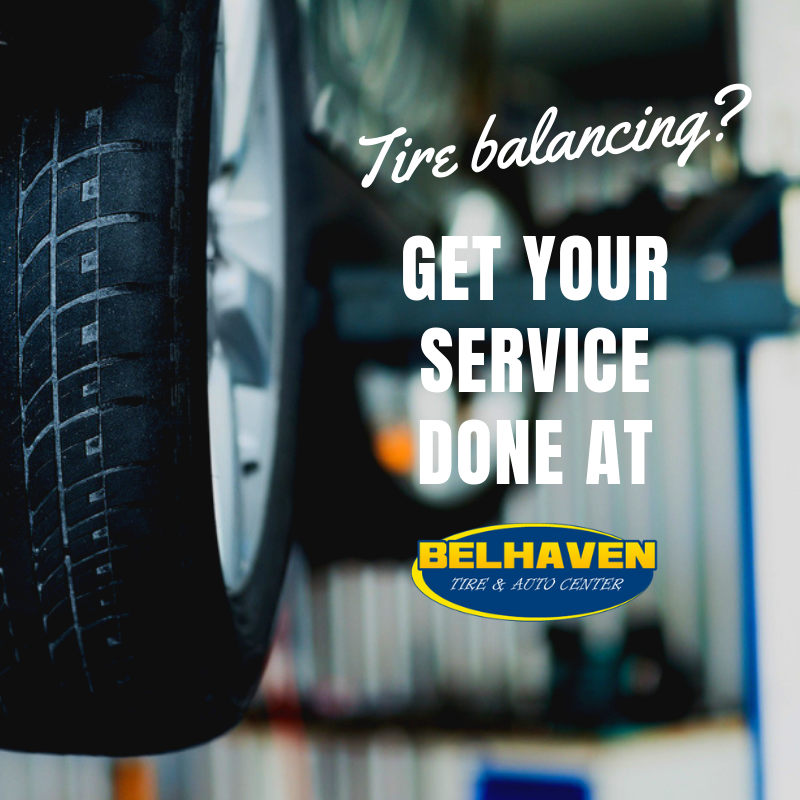
If the rotating masses are out of balance, an imbalance occurs. However, along with the rim also rotates, for example, the tire! It makes its contribution to node imbalance . A wheel can be called balanced if its axis of rotation coincides with the main central axis of inertia. At the same time, a small error is still present, so that any of the wheels has a slight imbalance. If it is exceeded, the driver will face problems. There are such types of imbalance:
Static imbalance reflects the uneven distribution of masses along the axis of rotation. If the unevenness is too great, the unbalanced masses will create their own centrifugal force, tending to move the wheel in vertical plane . In this case, the suspension, leveling such movements, suffers especially strongly. For static balancing, a weight is attached opposite the unbalanced mass.
The presence of dynamic imbalance indicates the uneven distribution of masses in the plane of the wheel. In the case of a statistical imbalance, the centrifugal force constantly created moments that were variable in direction, then here the forces are multidirectional. It is possible to eliminate such an imbalance by special stand .
In the case of a statistical imbalance, the centrifugal force constantly created moments that were variable in direction, then here the forces are multidirectional. It is possible to eliminate such an imbalance by special stand .
One of the most common causes of imbalance is mechanical damage to wheels. If they are dented, unbalanced masses will appear in the discs. The same thing happens when mud and snow stick , but the driver can easily fix the problem at the car wash. However, tires have the greatest influence on the balance of a car's wheels. They are removed from the center of rotation and the result of a serious imbalance can be a strong vibration of the wheels, and hence the body. Tire balance is affected by:
A point that is often overlooked: stones caught in the tread also affect the balance.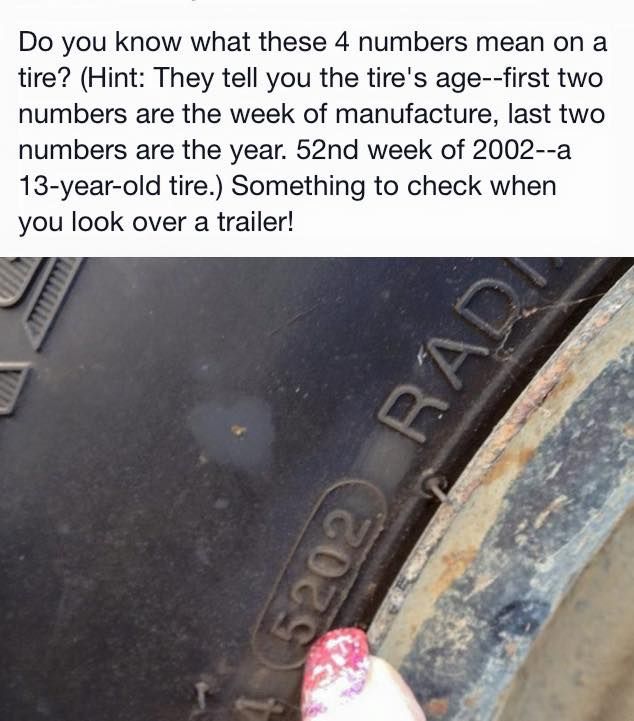 Special case: imbalance resulting from incorrect mounting of a tire or rim. In the latter case, it is enough to remove the disc and install it correctly, following the fit to the brake mechanism. There are also more interesting cases. At mismatch diameters of the central hole of the disc and the hub is also possible imbalance. Most often it appears on large diameter discs. Often the problem can be eliminated with the help of centering rings (arch supports).
Special case: imbalance resulting from incorrect mounting of a tire or rim. In the latter case, it is enough to remove the disc and install it correctly, following the fit to the brake mechanism. There are also more interesting cases. At mismatch diameters of the central hole of the disc and the hub is also possible imbalance. Most often it appears on large diameter discs. Often the problem can be eliminated with the help of centering rings (arch supports).
The first and most obvious consequence: the appearance of vibrations. They make themselves known when moving. With a slight imbalance, they can be felt already at a speed of 80-100 km / h . And with a strong one, even at a speed of 40 km / h or less. The nature of the vibrations changes with a set speed, vibrations and shocks of the steering wheel and pedals appear. In the worst case, it will be violated directional stability . This not only creates inconvenience, but also affects the safety of the ride. The following imbalance options are possible:
The following imbalance options are possible:
In the first case, vibrations of the steering wheel and pedals are usually noted , a slight loss of directional stability. In the second case, there will also be vibrations, but not always strong, but the car will be pulled to the side during quick turns. In the third case, all of the above is observed, noise appears in the cabin. In summary, we note the following symptoms of imbalance:
If these symptoms are ignored for a long time, one or more units may break. Firstly, the rubber-metal elements of the chassis and bearings wear out faster. Not only hub, but also tripods of CV joints. Further, this affects most elements of the chassis. Secondly, there is a fast and uneven tire tread wear. Thirdly, the risk of breakage of elements of the brake system increases.
Further, this affects most elements of the chassis. Secondly, there is a fast and uneven tire tread wear. Thirdly, the risk of breakage of elements of the brake system increases.
An important point : if you feel vibrations only when braking, wheel imbalance is not its main cause. We recommend removing the wheels and inspecting the brake discs. If at least one is deformed, replace both corresponding axles. When the caliper is jammed, vibrations also appear. The problem is eliminated by cleaning, troubleshooting, installing new guides and pistons, as well as applying lubricant. This material will help you understand brake lubrication.
Experts disagree on how often to balance the wheels of a car with no modifications to the chassis. In this case, the imbalance often occurs in the course of tire wear, and not due to a violation of the integrity of the rim. Although the latter option is also possible.![]() Here's what you should rely on:
Here's what you should rely on:
Sporty riders should have their wheels balanced more often than others – at least twice a year. Usually, drivers ignore this recommendation, as a result of which body vibrations appear. They indicate both an imbalance and a breakdown of specific components: an internal CV joint, pillows of the power unit and gearbox, fasteners and exhaust dampers.
Tire services undertake this work. If desired, the driver can balance the wheel on their own using self-purchased weights, but we recommend contacting specialists. The driver can only tighten the fasteners and clean the rim from dirt.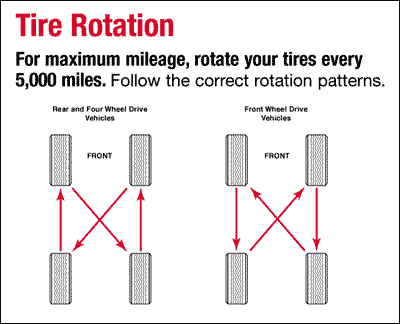 However, experts also make mistakes. Once in the service, follow the following:
However, experts also make mistakes. Once in the service, follow the following:
Unfortunately, in order to accurately speak about the wheel balance, has to visit the service. Focusing on external signs and characteristic malfunctions (vibration, steering wheel shaking), the driver cannot always determine which of the wheels are unbalanced and whether this problem is really relevant. Many experts recommend contacting specialists when even slight vibrations appear at speeds of 80-100 km / h.
In order to level the effect of unbalanced masses, small weights are attached to the rim. Tire services buy weights in large quantities. They are usually packaged in packs of 100 pcs. The following options are considered:
Tire services buy weights in large quantities. They are usually packaged in packs of 100 pcs. The following options are considered:
Board Brake Board
15 Hatchback (03.71 - 10.79)
9000 9000 100 HATCHBACK (XP) (XP) (11.2 As a rule, self-adhesive weights are used when balancing alloy wheels . However, due to the ease of use, they are used when working with almost any discs of passenger cars. In some cases, 9 are required0021 thin self-adhesive weights. The weight of most weights is a multiple of 5 grams. When choosing, also take into account:
 Depends on the type of rim/wheel;
Depends on the type of rim/wheel; What does not take into account when choosing is the method of packaging, the composition of the kit, as well as the quality of the surface treatment of the products (color and protective coatings). Good weights are produced by Tech International, Franken, Reifen, Clipper. Goods of "noname" brands are also found. There is a difference in quality, but not significant. In the case of buying self-adhesive weights, it is better to take a product from a famous brand - it turns out to be more reliable and less likely to peel off from the rim when driving.
Checking and balancing wheels should be a routine procedure for all owners of a personal car. It is recommended to trust the work itself to specialists. You can identify the imbalance by indirect signs - vibrations, steering wheel knocks and uneven tire wear. Note that vibrations can also be caused by wear of the supports of the units and drives. This does not affect the balance of the wheels, but the symptom is the same. When buying new and used. disks, as well as the installation of tires, be sure to balance the wheels - this guarantees the safety of the car and its reliability.
Note that vibrations can also be caused by wear of the supports of the units and drives. This does not affect the balance of the wheels, but the symptom is the same. When buying new and used. disks, as well as the installation of tires, be sure to balance the wheels - this guarantees the safety of the car and its reliability.
Do you want to choose a tire for your car, but do not understand tire markings well? It's not a problem! In this section, we will help you figure out what tire parameters are, what they mean, and which tire is right for your car.
Select tires / tire catalog
195/65 R15 91 T XL
195 is the tire width in mm.
65 - Proportionality, i.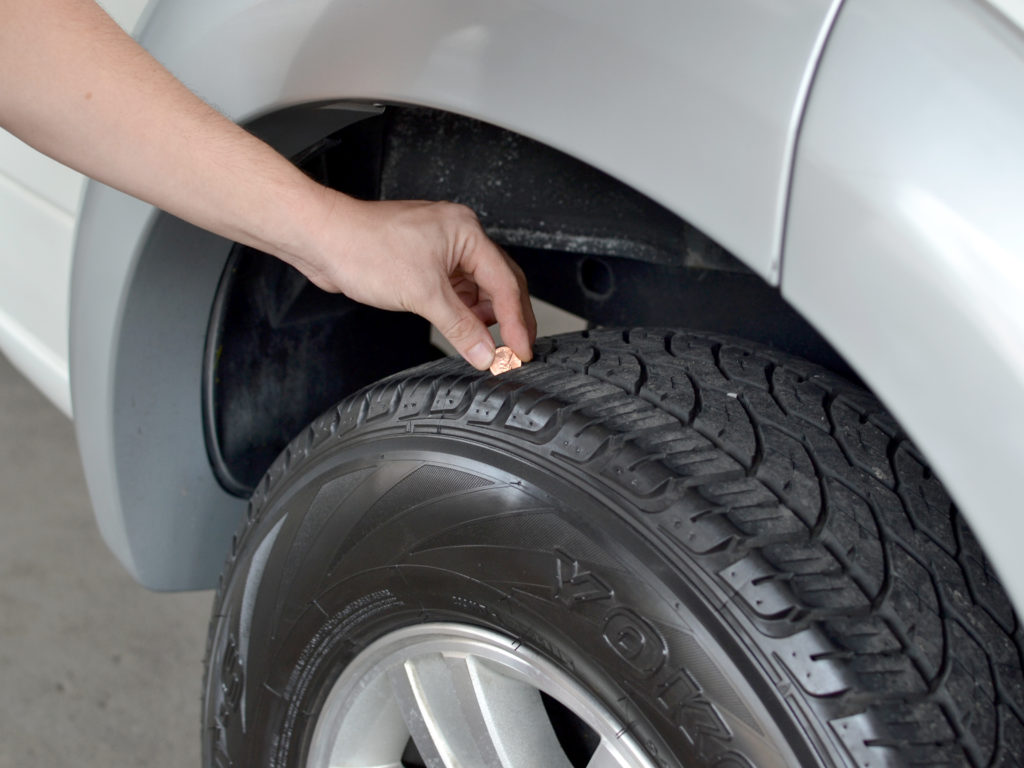 e. profile height to width ratio. In our case, it is equal to 65%. Simply put, with the same width, the larger this indicator, the higher the tire will be and vice versa. Usually this value is simply called “profile”.
e. profile height to width ratio. In our case, it is equal to 65%. Simply put, with the same width, the larger this indicator, the higher the tire will be and vice versa. Usually this value is simply called “profile”.
Since the tire profile is a relative value, it is important to take into account when choosing rubber that if you want to put tires with a size of 205/65 R15 instead of the size 195/65 R15, then not only the width of the tire will increase, but also the height! Which in most cases is unacceptable! (except when both of these sizes are indicated in the car's operating book). You can calculate the exact data on changing the outer dimensions of the wheel in a special tire calculator.
If this ratio is not specified (for example, 185/R14C), then it is equal to 80-82% and the tire is called full profile. Reinforced tires with this marking are usually used on minibuses and light trucks, where a large maximum wheel load is very important.
R - means a tire with a radial cord (in fact, almost all tires are made this way now).
Many mistakenly believe that R- means the radius of the tire, but this is the radial design of the tire. There is also a diagonal design (indicated by the letter D), but recently it has practically not been produced, since its performance is noticeably worse.
15 - wheel (rim) diameter in inches. (It is the diameter, not the radius! This is also a common mistake). This is the “landing” diameter of the tire on the disk, i.e. is the inside size of the tire or the outside of the rim.
91 is the load index. This is the level of maximum permissible load on one wheel. For passenger cars, it is usually done with a margin and is not a decisive factor when choosing tires (in our case, IN - 91 - 670 kg.). For minibuses and small trucks, this parameter is very important and must be observed.
T is the tire speed index. The larger it is, the faster you can drive on this tire (in our case, IS - H - up to 210 km / h).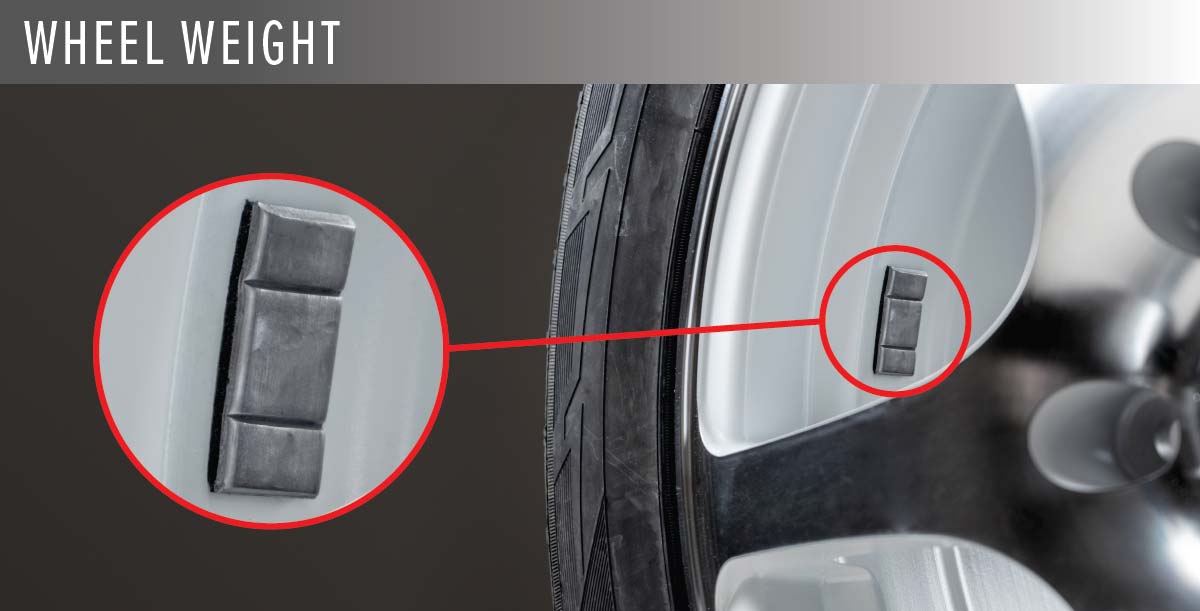 Speaking about the tire speed index, I would like to note that with this parameter, the tire manufacturer guarantees the normal operation of rubber when the car is constantly moving at the specified speed for several hours.
Speaking about the tire speed index, I would like to note that with this parameter, the tire manufacturer guarantees the normal operation of rubber when the car is constantly moving at the specified speed for several hours.
There are two different American tire markings. The first one is very similar to the European one, only the letters “P” (Passanger - for a passenger car) or “LT” (Light Truck - light truck) are placed before the size. For example: P 195/60 R 14 or LT 235/75 R15. And another tire marking, which is fundamentally different from the European one.
Example: 31x10.5 R15 (corresponds to European size 265/75 R15)
31 is the outside diameter of the tire in inches.
10.5 is tire width in inches.
R - a tire with a radial design (older tire models were with a diagonal design).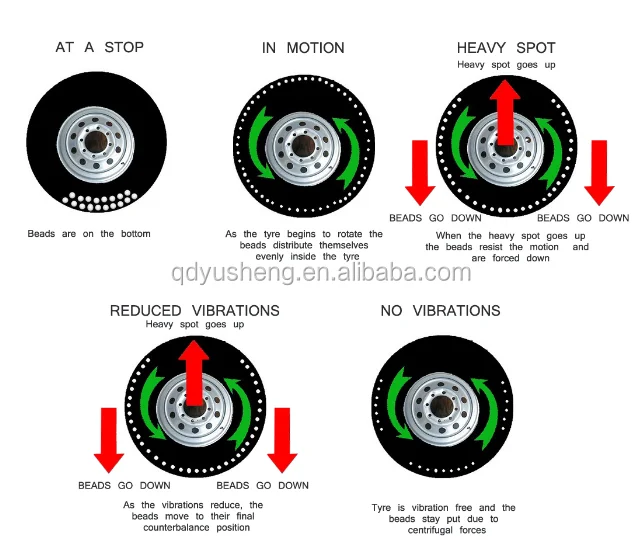
15 is the inner diameter of the tire in inches.
Generally speaking, except for inches that are unusual for us, the American tire marking is logical and more understandable, unlike the European one, where the height of the tire profile is not constant and depends on the width of the tire. And here everything is simple with decoding: the first digit of the standard size is the outer diameter, the second is the width, the third is the inner diameter.
XL or Extra Load is a reinforced tire, the load index of which is 3 units higher than that of conventional tires of the same size. In other words, if a given tire has a load index of 91 marked XL or Extra Load, then this means that with this index, the tire is able to withstand a maximum load of 670 kg instead of 615 kg (see the table of tire load indices).
M+S or M&S tire marking (Mud + Snow) - mud plus snow and means that the tires are all-season or winter. Many summer tires for SUVs are labeled M&S. However, these tires must not be used in winter, as winter tires have a completely different rubber compound and tread pattern, and the M&S badge indicates good flotation performance.
Many summer tires for SUVs are labeled M&S. However, these tires must not be used in winter, as winter tires have a completely different rubber compound and tread pattern, and the M&S badge indicates good flotation performance.
All Season or AS all season tires. Aw (Any Weather) - Any weather.
Pictogram * (snowflake) — rubber is designed for use in harsh winter conditions. If this marking is not on the sidewall of the tire, then this tire is intended for use only in summer conditions.
Aquatred, Aquacontact, Rain, Water, Aqua or icon (umbrella) Special rain tyres.
Outside and Inside ; asymmetrical tires, i.e. It is important not to confuse which side is the outside and which is the inside. When installing, the Outside inscription must be on the outside of the car, and Inside on the inside.
RSC (RunFlat System Component) - RunFlat tires are tires that allow you to continue driving at a maximum speed of 80 km/h with a FULL tire pressure drop (puncture or cut). On these tires, depending on the manufacturer's recommendations, you can drive from 50 to 150 km. Different tire manufacturers use different designations for RSC technology. For example: Bridgestone RFT, Continental SSR, Goodyear RunOnFlat, Nokian Run Flat, Michelin ZP etc.
On these tires, depending on the manufacturer's recommendations, you can drive from 50 to 150 km. Different tire manufacturers use different designations for RSC technology. For example: Bridgestone RFT, Continental SSR, Goodyear RunOnFlat, Nokian Run Flat, Michelin ZP etc.
Rotation or arrow This marking on the tire sidewall indicates a directional tire. When installing the tire, you must strictly observe the direction of rotation of the wheel, indicated by the arrow.
Tubeless - tubeless tire. In the absence of this inscription, the tire can only be used with a camera. Tube Type - indicates that this tire must be used only with a tube.
Max Pressure ; maximum allowable tire pressure. Max Load - the maximum allowable load on each wheel of the car, in kg.
Reinforced or the letters RF in the size (for example 195/70 R15RF) means that this is a reinforced tire (6 layers). The letter C at the end of the size (for example 195/70 R15C) indicates a truck tire (8 layers).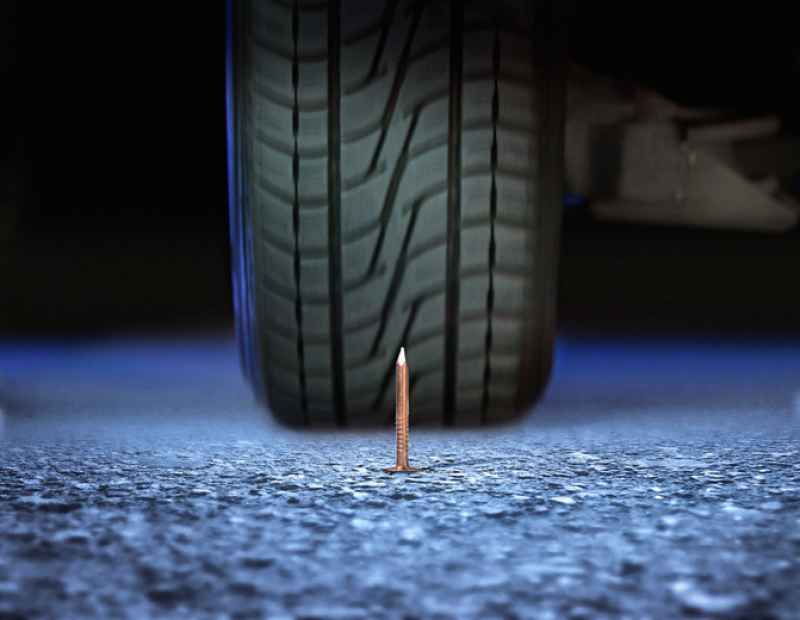
Radial this marking on the rubber in the standard size means that it is a radial construction tire. Steel means that there is a metal cord in the tire structure.
Letter E (in a circle) - the tire meets the European requirements of ECE (Economic Commission for Europe). DOT (Department of Transportation - US Department of Transportation) is an American quality standard.
Temperature A, B, or C The temperature resistance of the tire at high speeds on the test bench (A is the best).
Traction A, B, or C - The tire's wet braking capability.
Treadwear ; relative expected mileage compared to a specific US standard test.
TWI (Tread Wear Indiration) - tire tread wear indicators. The marking on the TWI wheel can also be with an arrow. Pointers are located evenly in eight or six places around the entire circumference of the tire and show the minimum allowable tread depth.